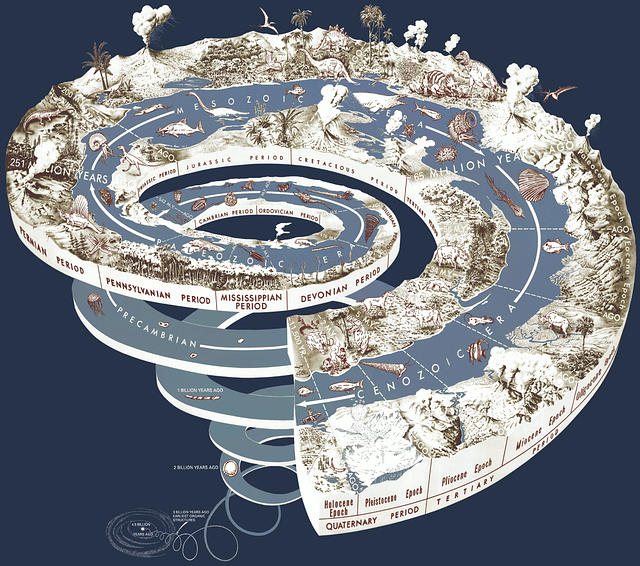Trash heaps lead us to prehistoric dolphin hunters

How ancient man lived his life, what he ate and what he used on a daily basis has fascinated modern man for centuries. We are forever trying to determine how prehistoric man functioned. Many of these riddles will never be answered definitively, but we can deduce some things from searching in the most unlikely of places: garbage heaps.
The results of one such investigation that took place on Pedro González Island have recently been published. Archaeologists were investigating the lives of pre-Colombian settlers who, it is believed, arrived on the island by sea. The feat of traveling hundreds of miles over the open ocean in dugout canoes shows the impressive capability of prehistoric man, but it seems his ingenuity did not stop at his ability to navigate the open seas.

The research teams sifted through an extremely large ancient garbage heap, or midden, and were astounded to find the remains of dolphins. What incited their interest further was that the dolphin remains constituted around eight percent of all the mammal bones found in the midden, leading the research team to the conclusion that these prehistoric peoples actively hunted and killed the dolphins for food. In other similar sites, the number of dolphin bones found was very low, leading to the conclusion that those that were found came from mammals that had been beached or stranded and thus easily hunted. In the sea, dolphins are extremely difficult to hunt, but the number of bones found on Pedro González Island precluded prehistoric man simply butchering stranded dolphins when they were lucky enough to find them.
Dolphins are very common in the warm waters around Panama, and Pedro González Island has a natural u-shaped beach which would lend itself to corralling the mammals and driving them into shallow water, a hunting methodology still in use in the Solomon Islands. The natural upwelling of nutrient-rich water that occurs in the Gulf of Panama would have attracted large schools of fish, such as anchovies and herring, which would have, in turn, attracted large pods of predatory dolphins. As the dolphins swam into the bay, the islanders would have used noise to frighten the schools and drive them onto the beach. One dolphin skull recovered from the midden has a puncture wound made by a blunt-shaped object, further adding to the evidence the animals were actively hunted. The heap gave up three different species of the dolphin; harbor dolphins, bottlenose dolphins, and common dolphins.

Dr. Richard Cook of the Smithsonian Tropical Research Institute, based in Panama City, Panama, was one of the scientists on the site. When asked about the discovery, he said “I would argue, though it’s speculative, that the retention of dolphin hunting is probably due to an early circum-Pacific maritime adaptation by humans. With the data we have, we cannot really prove they were hunting, but the age of the site puts it at a time when people all around the Pacific Rim – in Mexico, Chile, and Japan – were hunting dolphins.”
The midden also gave up the teeth of tiger sharks that archaeologists estimate to have been between eight and ten feet long. It is presumed that these creatures were following the dolphin pods and became caught up in the hunt and were killed at the same time.
Not only did these prehistoric settlers hunt large mammals in the sea but they also hunted, to extinction, a tiny dwarf deer. Researchers assume that the deer became dwarfed when the islands were cut off from the mainland, and a natural reduction in size occurred as food resources were limited on the islands. Archaeologists estimate that the dwarf deer probably weighed a little over 20 pounds, fully grown. Bones in the midden showed evidence of being cut when meat was removed, and others had been smashed to get to the marrow. As the layers in the midden became younger and younger, so the number and size of the deer bones unearthed became smaller and smaller.

This indicated that mature adult deer were no longer being hunted, and they were becoming more and more difficult to find. Eventually, by the time that pottery-using people used the midden around 2300 years ago, there were no more deer bones, indicating that the species had become extinct around that time.
This midden that speaks to us about the lives of the prehistoric people living in the bay area also showed that they grew maize, sweet potatoes, cassava and that they also ate fish (grouper, jacks, grunts and parrotfish), possums, iguana, snakes, turtles, and several species of birds. It gives a fascinating insight into the lives of the ancient islanders, and one wonders what the archaeologists of the future would make of our garbage dumps.
If you have any comments then please drop us a message on our Outdoor Revival Facebook page
If you have a good story to tell or blog let us know about it on our FB page, we’re also happy for article or review submissions, we’d love to hear from you.
We live in a beautiful world, get out there and enjoy it. Outdoor Revival – Reconnecting us all with the Outdoors.
